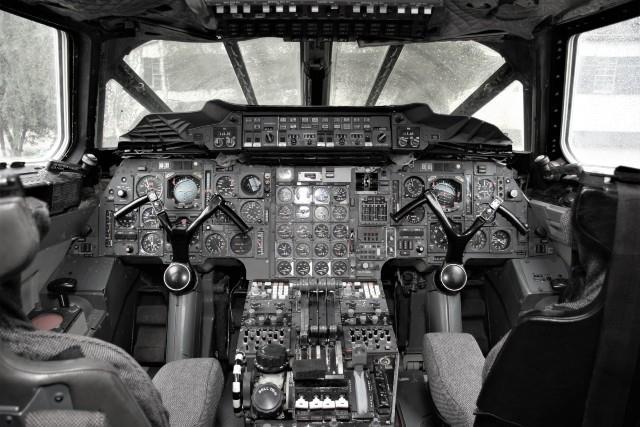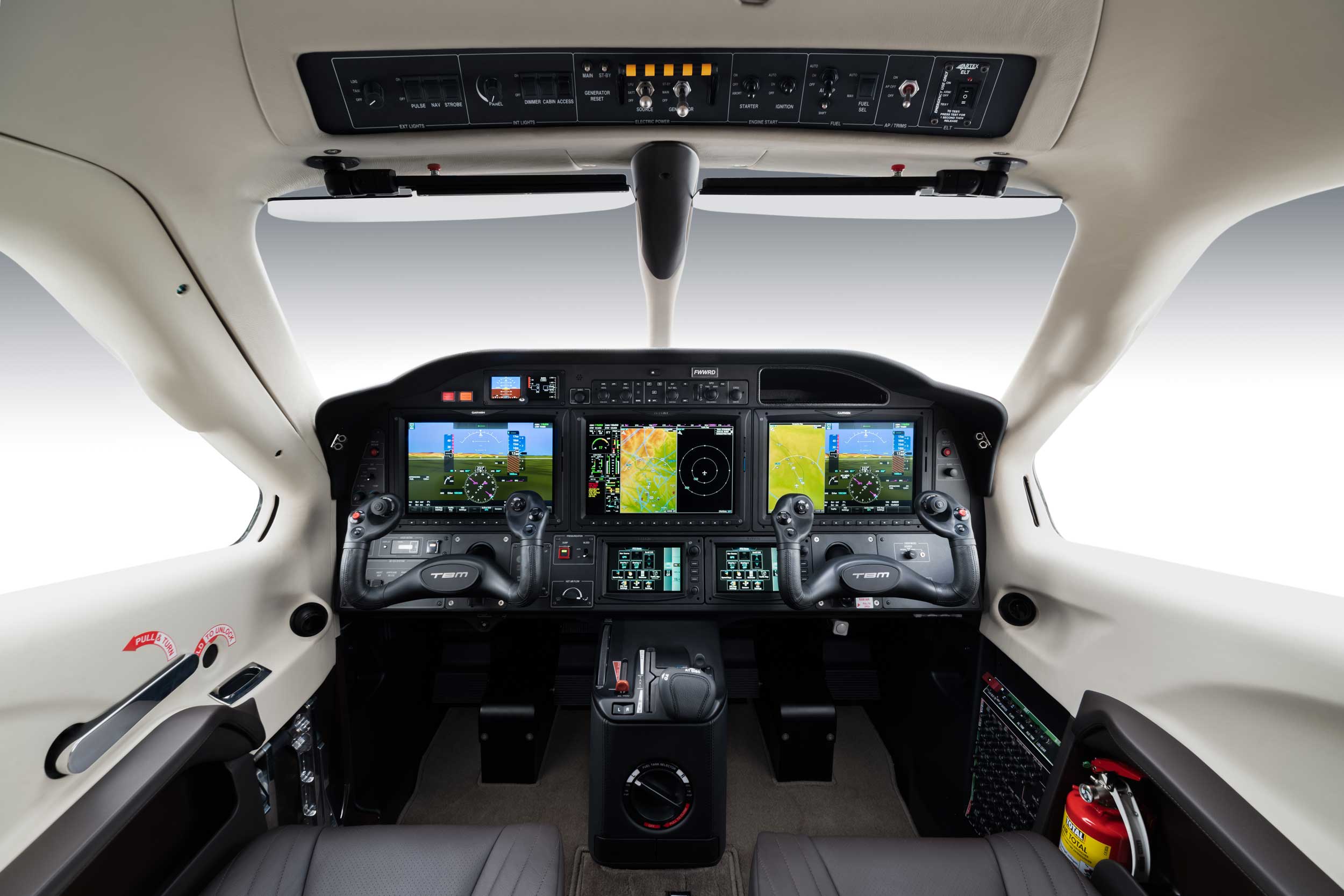Uh oh. I think Trump’s found the new head of his legal team.
Now that’s funny!
That’s a 737 NG. Some of which have the fancy split winglets. Clambering up onto the wing from the ground, even with flaps set for takeoff, would not be easy. So the guy cleverly brought his own ladder. Which probably helped him over the airport perimeter fence too. It would be hella noisy with the engines right there. At least until the pilots shut them down.
Both he and the airline are fortunate the guy didn’t get too close to the front hemisphere of the engine or else he’d have been Cuisinarted and Alaska would be out a couple million to fix the engine.
If the nut had had any class he’d have straddled the pylon above the engine and ridden it while waving one hand above his head:
I especially like that the file photo they used for the headline / thumbnail shows an airplane in flight as the focus. They had a pretty interesting story already and they still thought they had to amp it to 11 for the lede.
I think probably half the fun of being a “police spokesman” is getting to intone the insanely obvious as if it was some deep insight. And in your best police third person passive doublespeak. It’s truly an art form.
Those folks must swap some amazing stories over bourbon at their conventions.
Sidebar: local news once interviewed a fire department spokesman who was standing in front of a natural gas pipeline, which had burst. Huge gouts of flame were shooting out of it.
Fire department spokesman: “It appears that there is a pressure containment problem with this pipeline.”
About the same time, a bear wandered into our city. After it was hit with a tranquiliser dart and was being loaded on a flatbed for relocation, the police services spokeswoman stated: “We had to act quickly on this matter, because bears are large animals with sharp claws and big teeth.”
So the Las Vegas guy brought his own ladder with him? I wondered how he got onto the wing. Planning, planning, planning…
Pressure containment failure indeed. And ignition containment failure, followed by low temperature maintenance failure as well.
I wondered how he got up there at first; it’s not an easy climb and the best place to try is real close to the engine. In Johnny’s link, there’s a still that’s the opening scene of a witness’s mobile phone vid. There’s a ladder laying on the ground ahead of the wing.
Looking now at that same image, I see the shadow of a person standing on the ground off-camera to the right. Presumably a responding policeman or airport worker. Maybe they brought the ladder.
Ref my earlier comment about the lede picture being a stock photo of an airplane in flight …
This time when I hit the page that stock photo has been replaced by a vid from the local newspaper. Whose preview still is the wing of an A320 painted in another airline’s colors. The rest of the vid is nothing but pans across stock pix of various flavors of airplanes at various other airports. They’re not getting any warmer.
Yah, not the best image to use. That gave me the willies. I know flight crews who’ve had to deal with people who climb into the wheel well only to discover they’re sitting on the outer door that opens when the wheels retract.
Ouch! You can hardly blame yourself for dropping a stowaway out of your gear well, but you hardly can’t either. There’s a sickening clip from years ago of a DC-8 takeoff which drops a stowaway. I bet YouTube has it, but I’m not going looking for it.
I knew a pilot who had a crew chief sucked into his F-16. Totally not the pilot’s fault. He was never quite the same person after that.
I’ve never seen any videos but there’s a photo of a teenager from many decades ago. The photographer didn’t see it happen when he took the picture. Not the first person to exit a DC-8 wheel well.
This guy is lucky they got the engine shut down. He could have slid off the wing and into the engine. It looks like the plane shut down on taxiway B going back to the terminal. You can see the VOR in the background. That suggests it happened on or about the start of the runway if he jumped the fence. Otherwise he had a long walk to get there and would have been seen.
I figure they were in line for departure on the 01s. So facing south near the SW corner of the field not far from the south fence. Back when it was just desert south of there, that was a popular spot to fence hang. I lost a nice pair of GI sunglasses that way back in the day.
I bet when the pilots saw this nutbag heading for their airplane they started the APU and killed one or both engines. Those cops that charged the guy were damn lucky he fell off the wing first. At least one of the officers would almost certainly have gone over the side in any struggle. It’s real slippery out there.
Is anyone willing to explain what a “coffin corner” is in flying?
I have looked it up but it is not clicking. It seems where a low speed stall meets a mach limit(?) and bad things happen.
Is this something that can only happen in jets at high altitude? I’m guessing your Piper Cub won’t do it but I really don’t know.
Until the experts show up… a coffin corner is a portion of the “flight envelope” that is sufficiently narrow that any small departure from the current straight and level flight may cause the aircraft’s state to leave the flight envelope, and become out of control. The one at the wiki is due to true airspeed, in an aircraft incapable of supersonic flight, getting close to the airspeed required to break the speed of sound.
Airplanes fly because their wings shove air below them, the reaction from which causes the wings (and the airplane attached to them) to rise. The air above the wing needs to hang along for the ride. More on that in a bit.
All of this takes thrust to move the airplane through the air. Don’t shove enough air, because you’re going too slowly? The airplane sinks. You can shove more air for a given amount of thrust by increasing the angle of attack—the angle between the path the wing is taking through the air and the angle of the relative wind. Think of it like taking a more angled cut with a knife to make a thicker slice. Like that knife metaphor, if you make the angle too big, your knife isn’t cutting anymore. So too, the airflow on your wing will stop coming along for the ride and your wing will stop shoving air down. You drop.
What does this have to do with coffin corner? As you get higher, air gets thinner. Even though you’re still zipping along at a given speed, your wing is shoving less air down. You haven’t gotten any lighter though. So you’ll sink, unless you go faster, raise the angle of attack, or both. Eventually, you get to a point where, in straight and level flight, you don’t have any more power to add, and you can’t put any more angle of attack in. That’s your “service ceiling.” For planes like the U-2, that’s really high, and really fast
Where Mach comes in is that the speed of sound is directly proportional to the density of the medium the wave travels in. Sitting in water? Sound is really fast, about 1500 m/s. In air, it’s about 340 m/s at sea level, and it decreases with altitude. Your real stall speed is going up—because air is getting thinner—at the same time the speed of sound is going down. When you get near the speed of sound, there’s burbles and turbulence in the air. All of that really helps the air on top of the wing decide it doesn’t want to keep flying with your wings. It leaves, the bottom wing air stops getting shoved away, and you stall, often violently. The region where your high stall true airspeed and the slower speed of sound get near each other is that particular coffin corner.
(Johnny LA can explain the helicopter equivalents, and LSLGuy or Richard can get into what the “back side of the power curve” corner means.)
That’s an excellent potted explanation.
The classic coffin corner occurs with non-supersonic jet airplanes. As you go higher, you continue to try to fly at the same efficient “indicated air speed” “IAS” as you do at low level. That’s really saying you’re flying at the same ram pressure. So the wing “works” the same way as it does down low and you’re doing fine.
But the higher you go, the higher the Mach number for the same IAS. Assuming sufficient engine power and a big enough wing you’d eventually get up to an altitude where the stall airspeed is very close to the maximum Mach the airplane can handle.
Once there, if you slow down a smidgen you stall and fall out of the sky. If you speed up a smidgen you get into Mach buffet and fall out of the sky. If you encounter turbulence, that applies G to the wing, which immediately stalls and you fall out of the sky.
More commonly, up around that altitude you’re also just about out of excess engine thrust. After all, the engine(s) and wings and speed limitations were all designed to work together; having a lot of any one thing left over while being fresh out of the others is inefficient.
So if you lose power for any reason (say one of your multiple engines fail) you’ll immediately fall out of the sky. If it suddenly warms up as you cross an airmass boundary or the wind suddenly shifts, you’ll lose speed and have very little excess engine power to correct the situation quickly enough. So you stall and fall out of the sky.
You’re probably sensing a pattern here by now.
Here are some pix that provide some simplified diagrams with annotations.
https://www.google.com/search?q=coffin+corner+aviation&tbm=isch
Back in teh early days of jets airliners this was not well-understood. What was well-understood was that higher was more fuel efficient and higher was faster. So an awful lot of former DC-7 and Constellation pilots drove their shiny new DC-8s and 707s up into the corner and duly fell out of the sky. In most cases they recovered control well above the ground. Fortunately air traffic was much less dense, so a jet falling out of the high altitudes was unlikely to bump into another one on the way down. Not so true nowadays (pre-COVID).
Though not commonly termed “coffin corner”, even lower speed airplanes down to Piper Cubs can get themselves up to an altitude where they are (all-but) out of excess power.
Once up there, if anything dynamic happens, you’re stuck with needing to descend aggressively to recover the speed the engine can’t deliver. Which may not be safe if you’re just above clouds, or just above rocks.
In helicopters, you need to watch out for retreating blade stall. @Gray_Ghost talked about airspeed and lift. In a fixed-wing aircraft, both wings are have the same airspeed. In a helicopter in directional flight, one ‘wing’ has a greater airspeed than the other wing(s). Let’s say you have a two-blade (‘semi-rigid’) rotor system on a helicopter flying at 100 knots. Assume the rotor blades are moving at 300 knots at the tips. The advancing blade (relative to the direction of flight) has an airspeed of 400 knots, and the retreating blade has an airspeed of 200 knots. Obviously, the retreating blade will generate less lift unless something is done. What’s done is ‘flapping’ and ‘feathering’. Feathering is the automatic changing of the pitch of the rotor blades. As the blades go around, the pitch is adjusted by their positions on the swashplate. The advancing blade’s pitch is reduced, and the retreating blade’s pitch is increased. At the same time, the advancing blade is encountering higher airspeeds so it makes more lift and rises. By rising, its angle of attack is reduced relative to the wind. The opposite is true for the retreating blade; its angle of attack is increased. To make a long story short: The blades flap to equilibrium so that there is equal lift on both sides of the helicopter.
What does this have to do with retreating blade stall? At some point, the retreating blade will not be able to generate enough lift – just like a wing on a fixed-wing aircraft that is going to slow or too high. When that happens, the helicopter falls off to the left (in forward flight) in American helicopters, or to the right in Russian and French helicopters – with suboptimal results. Since air density is less at higher altitudes, the helicopter must fly slower to maintain lift on a retreating blade. At lower altitudes, the helicopter must be flown below the never-exceed speed.
Notes: 1) I haven’t heard ‘coffin corner’ in general use. It’s a term that has always sounded a bit old-fashioned to me. Helicopters do have something called the Dead Man’s Curve (Height-Velocity Diagram) though. 2) I’ve used ‘directional flight’ instead of ‘forward flight’. While the aerodynamics usually apply to forward flight, helicopters can fly in any direction.
As to the “coffin corner” term itself, it was coined back in the early jets, so 1950s-ish. I don’t know anybody in serious aviation who would use it today except as folksy slang.
I’ve never heard the term used. But to give you an idea of how serious it is look at the SR-71. It is flying on the absolute ragged edge of it’s envelope. if one engine started to stall the other would shut down or the side load would destroy the plane. They had a chemical restart system using Triethylborane which ignited when it comes in contact with air.
Is there a term used these days to describe a plane getting into this realm of flight? I assume its dangers are still taught and the pics you linked earlier clearly show that corner. I am guessing it is a dangerous place to fly hence the term.
I’d only heard about it as a football punting term before. Is there any connection?
As I understand it that stuff is unpleasant but it made the SR-71 engines flash a neat green color when starting.
What is the deal with airplanes and limited forward views out of the cockpit?
I don’t get it. So many cockpits I see the pilots have a limited view out the front windows. Some planes (GA at least) have really nice forward views (see Cirrus SR22 below). Some not so much. In commercial and military jets it’s all over the place.
The Concorde went to great lengths to design the drop nose so the pilots could land but, honestly, I can’t see how it helped unless every pilot was 6’6"…and not sure even then. Looking at the pic below I can’t see how it mattered. Obviously it did…hence this question.
The Spirit of St. Louis famous for the first Atlantic crossing only had a periscope to see forward (you can see it at the top of the pic below for this plane).
The SR-71 spy-plane’s forward view was so laughable I wonder why anyone bothered (at the speeds and temps the plane experienced maybe windows there weren’t the best ideas).
I’m not saying there should not be windows but if your forward views are so obscured then why bother?
As usual…the planes are designed by people much smarter than I am and know their stuff. I am just curious.
Some examples:
Cirrus SR22 cockpit:
https://i.redd.it/ktpvlhg5bpq21.jpg






